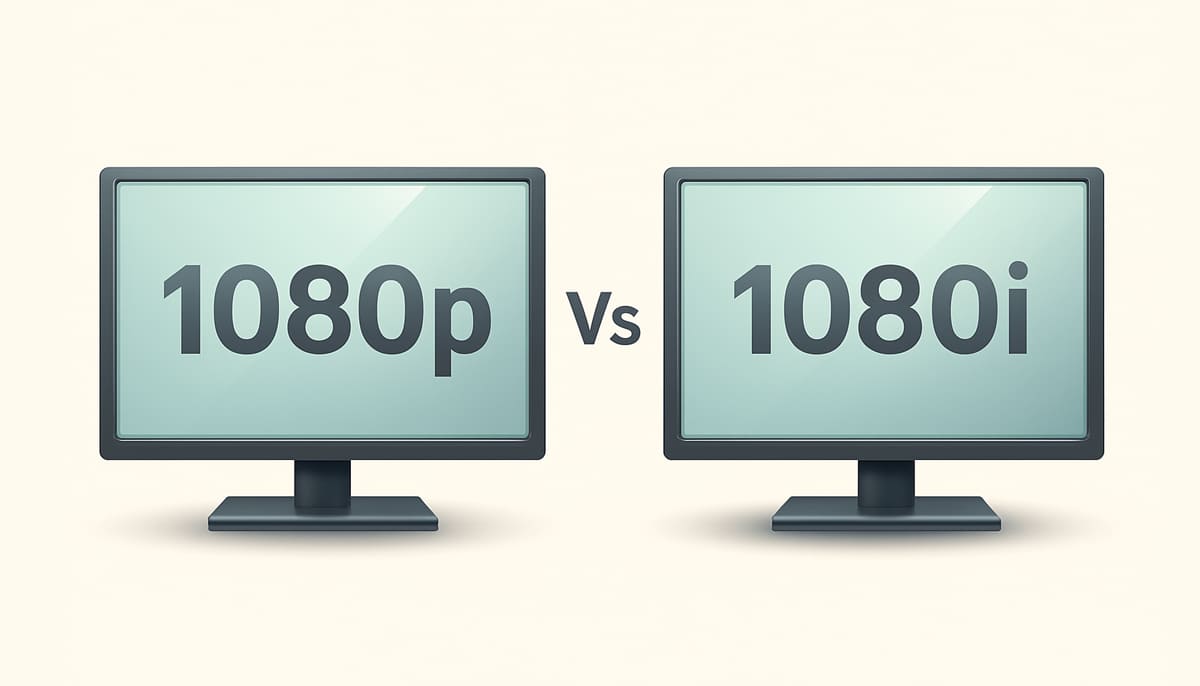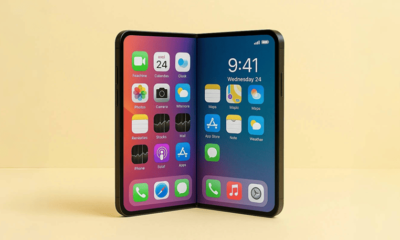Tech News
1080p vs 1080i – What’s The Difference?
Published
3 months agoon

Not everyone is technically sound enough to understand the difference between 1080i and 1080p when buying a monitor or TV. This is a common issue amongst the majority of having less or no knowledge about these things.
At first glance, they may seem identical because of the resolution, but there is more to it than just the number of pixels, and unless you are aware of it, making an informed choice is hard.
The letters “i” and “p” differentiate them based on the images displayed on your screen and how it looks like when a fast-motion sports scene is on. This may not be the degree of clarity you are looking for and rather want something concrete, then this guide on 1080p vs 1080i will help you understand better.
Difference Between 1080i & 1080p
When you understand the common factor better, understanding the differences becomes easier. Both share the feature of high-definition format, and their differences lie in their function, which is defined by “p” and “i.”
“P” in 1080p stands for progressive scan, which refreshes the image lines and creates a clear and smooth picture, enhancing the watching session for you. This particular feature makes 1080p a “true HD” and is used as a standard format for streaming devices, monitors, TVs, and gaming consoles.
“I” in 1080i, means interlaced, which refreshes the odd-numbered rows first, and then the even-numbered ones, but it happens so quickly, that you cannot see the full image at once, and the picture quality is also not very sharp particularly if a fast motion scene is on.
When broadcast signals and internet speeds had more limits, 1080i was a good choice because it used less data, but now that we have higher bandwidth and better technology, 1080p is a better choice for most screens.
Some channels still use 1080i, so if you try to watch them on a 1080p screen, the TV will combine the two halves into a full picture. Though it works fine, the image may not look as crisp as 1080p content and that’s the only problem you have to deal with.
1080p gives you a smoother viewing experience, but uses more data and also boosts the picture quality better than 1080i. This comes in handy if you are watching sports, streaming high-quality video, or playing games because unlike 1080p, 1080i cannot handle them.
Which Is Better?
Unlike 1080p, 1080i cannot show a full image at once and cause “motion artifacts,” particularly if you are watching action or sports and, in some cases, the picture may look blurry or even broken.
1080p eliminates this problem as it refreshes the whole image at once to project smoother and more stable visuals without compromising the sharpness. The difference in the image quality of both devices is evident and this alone should be the base of your decision and the resolution you want.
For a clearer image, go for 1080p because it is not only a smarter, but also a future-proof choice and doesn’t require you to change your device sooner.

EU Court Annuls DSA Fee Method — What It Means for Meta & TikTok

YouTube View Counts Are Down: Ad Blockers May Be the Reason — Do This Now

Amazon Hardware Event 2025 (Sep 30): Time, How to Watch & What to Expect

iPhone 17 Launch Day NZ (Sep 19): Find Stock Fast, Pickup Tips & Best Deals

The Top 5 Mistakes People Make When Moving (And How to Avoid Them)

6 Major Perks of Using Luxury Car Rental Atlanta Airport Services

Apple s New EU App Store Fees Explained (2025): What Changes Under the DMA and What Developers Should Do Now

Apple Is Testing Foldable iPhone Production What That Means for 2026

TikTok Ban Deadline Extended to Dec 16, 2025 What It Means






